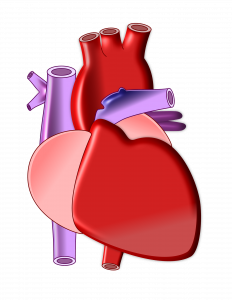
While shopping for Valentine’s’ gifts for my girlfriend this year, among all the heart-shaped merchandise, I found myself thinking about how not everyone has a working heart.
Each year there are more than 3,000 people in the U.S. in need of heart transplants and only about 2,000 take place. That means there are close to one thousand patients who don’t get hearts. But the Visible Heart Laboratory at the University of Minnesota is looking to change that.
The laboratory itself was established 20 years ago. Its goal was to conduct research that allows people to better understand the workings of the human heart. Now they’re successfully able to get hearts beating again just a few hours after they’ve arrived at the laboratory.
This is an incredibly important achievement considering how fast the human heart can degrade after death and how urgent the majority of heart transplants are.
When I think of restarting a heart, my first thought is of the defibrillators used to revive heroes in movies. But the technology this lab is developing is a lot more complicated than that.
First, these hearts are connected to the Visible Heart apparatus. This technology mimics the potential donor, pumping oxygen and minerals into the heart with a clear liquid that resembles blood in viscosity but is easier to monitor (due to being a different color to the blood vessels.)
Then, they create images of the heart by inserting a thin catheter tube attached to a miniature camera; sending high frequency sound waves into the heart and creating an image based on the relative intensity of the reflected wave; and passing X-rays through the heart, creating an image developed depending on which waves have enough energy to convert an electron into light when they reach a screen on the other side. Processes more succinctly referred to as endoscopy, echocardiography and fluoroscopy.
These images show how the potential donor would react to the new heart and can be used to develop devices that improve heart activity in humans and reduce the number of necessary heart transplants, increasing their success rate and longevity.
This technology is helping to increase the amount of successful transplant surgeries and the proportion of eligible donors whose hearts are able to be used for transplants.
However, only somewhere around half of eligible U.S. residents are signed up to the organ donor registry.
To make sure these scientists’ hard work can be used to its full potential, we need as many people as possible to put their names on the list because as any sappy romantic like me knows, there’s no such thing as too many hearts.
More than half of heart transplant recipients live another 10-plus years after their transplant, so it’s one of the longest lasting gifts you can give someone, especially on the average college budget.
Plus, signing up to the register only takes a couple of minutes, is completely risk free and doesn’t require any lifestyle changes, so there’s no reason not to.
I love Valentine’s Day, and I’m definitely planning to buy heart-shaped chocolates for somebody special — but this year, I’m also signing up for the Pennsylvania organ donation registry, so that I can (in a very small way) join in these scientists’ efforts to give everyone in the country a working heart.


